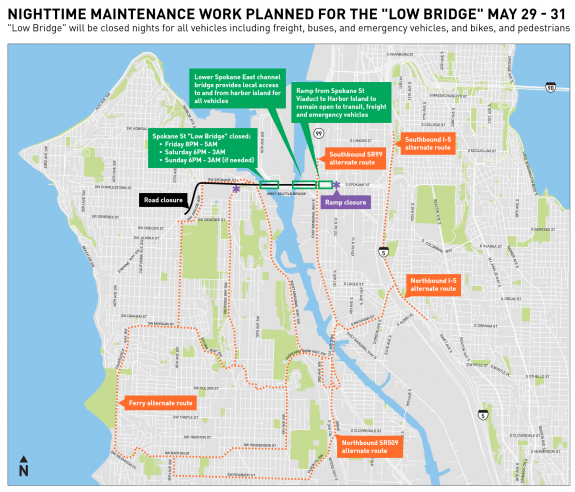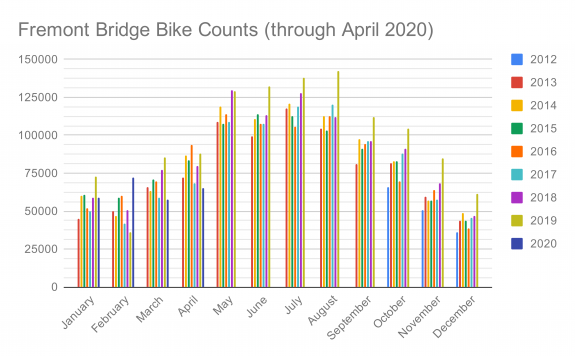Right now, Seattle’s Police Department and Mayor Jenny Durkan are trying to get out of a Federal consent decree in place since 2012 following a pattern of police violence. The current Seattle Police contract is not in compliance with the consent decree, the courts have decided, especially when it pertains to review of police misconduct. And while documented police “use of force” incidents are down since 2012, this work is no where close to complete.
Without a system of police misconduct review that the public can trust, our city is telling people of color that they are on their own if they encounter a racist police officer. The city is also telling people that they are not interested in firing their racist officers, so the odds of encountering one are significant. When we talk about “safe streets,” well, those streets are not equally safe for everyone. People of color are more likely to be injured or killed in traffic collisions and more likely to be wrongfully searched, injured or killed by police.
Watching scenes of destruction in Minneapolis reminds me of the last time I saw property destruction in the streets: A Seattle “sweep” of encampments in the International District that brought out protestors to watch as city workers chucked people’s belongings into a garbage truck. Our city is not providing adequate shelter for folks without homes. Our city is not providing places for people to store their belongings. Our city is not providing trash receptacles and pickup so people without homes can get rid of their trash properly (if citywide trash pickup stopped running, everyone’s homes would quickly fill with garbage just like many encampments). Our city is not providing enough places for people to take a shower, go to the bathroom or wash their hands. But our city will send staff to throw away people’s things and tell them to go somewhere else.
This system tells anyone without a home that they and their property are not safe or welcome in our city. So again, when we talk about “safe streets,” our streets are not equally safe for everyone. People experiencing homelessness are at increased risk of being seriously injured or killed in a traffic collision and they are at increased risk of being victims of a violent crime, victims of police violence and loss or destruction of their personal property. And people of color are more likely to experience homelessness.
As a white man who is privileged enough to write about biking and traffic safety as my job, I do not do enough to actively fight against inequality and racism in our society. It’s too easy to hide in the safety of my skin color and just focus on people riding bikes. Sometimes it’s an escape from the horrors of what is happening in our world. I can’t see that video again, so instead I’ll spend a few hours in a spreadsheet analyzing bike counter numbers. Sure, the bike counter numbers are interesting, but my privilege allows me the luxury of that escape.
Or maybe I will escape by going for a bike ride or walk. Maybe I’ll even go to one of our city’s car-light Stay Healthy Streets. But again, whose “health” are we protecting? I have the privilege of only worrying about car traffic as a threat to my safety.
In the video of Derek Chauvin murdering George Floyd, there is a green bike lane painted on the street in the background. It, of course, did nothing to stop this murder. There’s no reason why it would have. That makes it a strong visual metaphor for the effectiveness of a safe streets advocacy that does not actively fight white supremacy. The goal cannot be to simply repaint the lines on the streets where police kill Black people.
If you are a white person reading this, it’s on us to fight racism every day starting with racism inside us. Only by understanding the ways our white supremacist society has embedded bias within us and provided us privileges can we take action to fight against it. Simply “not being racist” isn’t enough, as Tamika Butler put it in a powerful and devastating blog post this week. Read the whole thing. We are lucky to have strong leaders of color, but white people cannot leave the work of dismantling racism to people of color. A post like this is generous, and it’s the job of white people to do the work and take risks to speak up and stand up against racism. An excerpt:
I’m exhausted. I’m out of words. I really need white people to do more than just say they’re fighting for justice. I need them to get up every day and repeat and ask themselves five questions and really face themselves and their answers. I want them not just to lean in, but to live in, to an urgency to do more. I want them to sit with these things and not turn away when they hear themselves say the answers:
- Do I understand that not being racist isn’t the same as being anti-racist?
- Why am I so afraid to be brave enough to confront my power and privilege?
- What am I waiting for to decenter whiteness and realize just because I have never experienced it (or seen the research to prove it) doesn’t mean it isn’t real?
- What am I doing every single day to force myself to think about racism and white supremacy?
- What am I doing every single day to stop the killing of black people?
For further reading on how race and biking intersect, read Dr. Adonia Lugo’s Bicycle/Race: Transportation, Justice, and Resistance. She also spoke about her book this week for a Microcosm Publishing live stream.
















